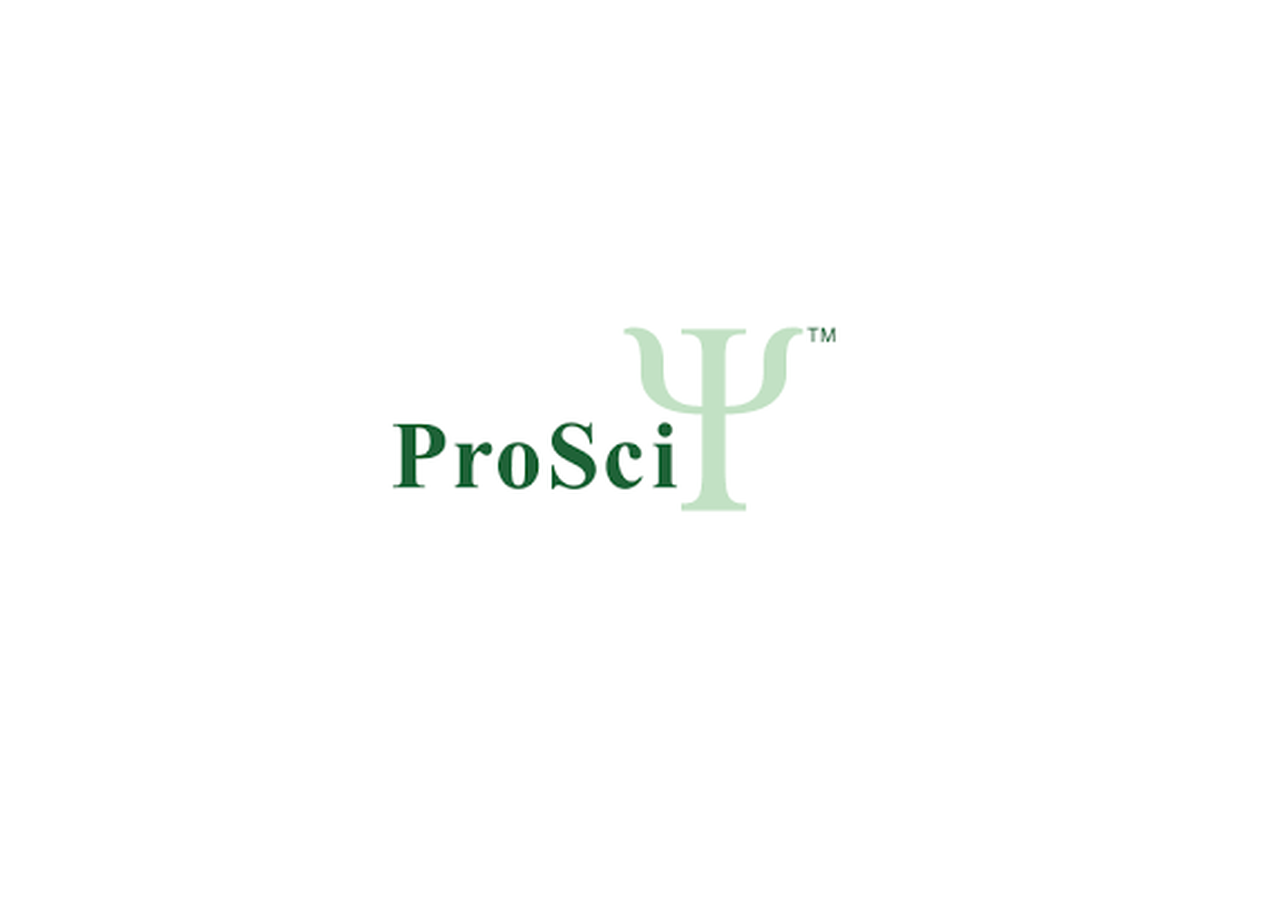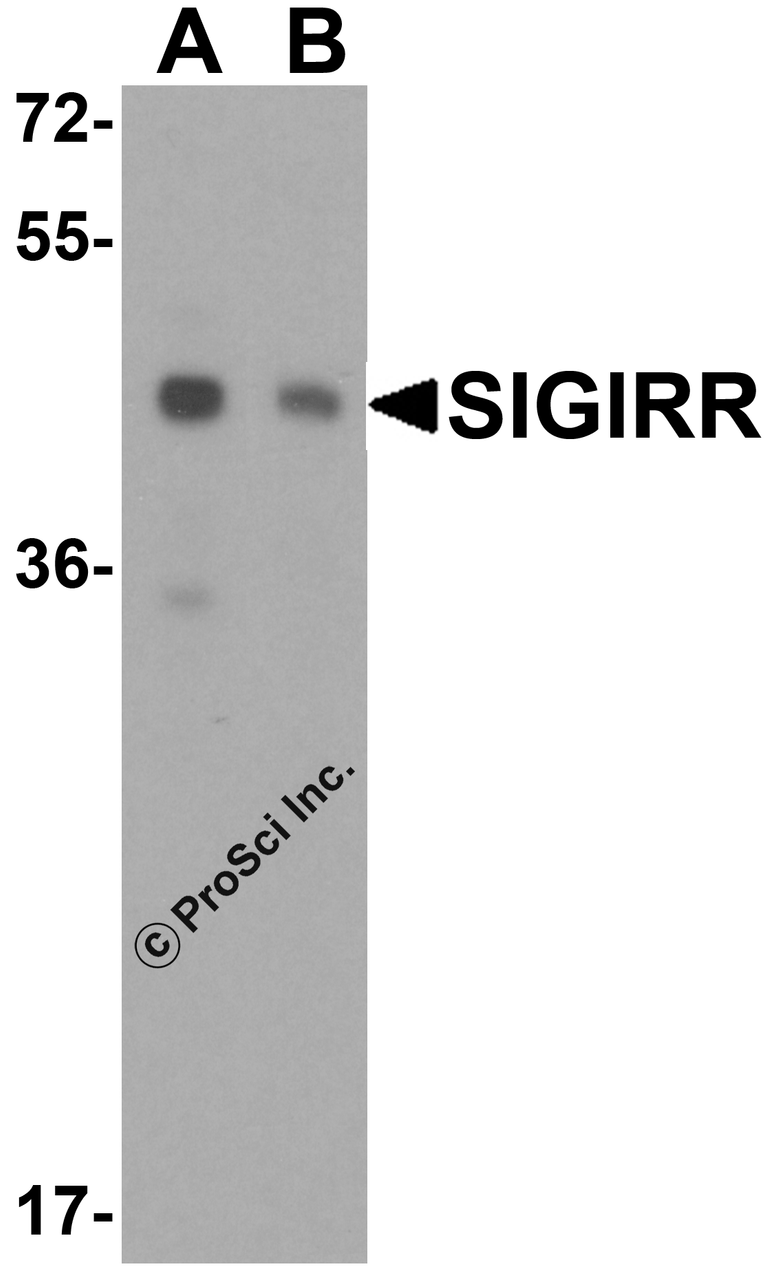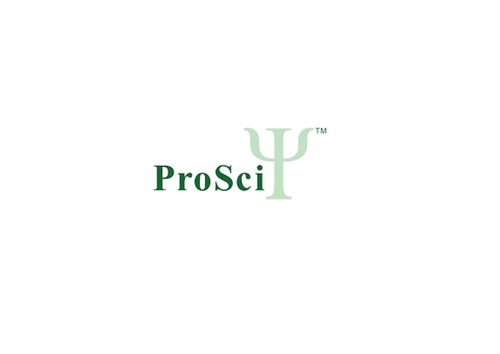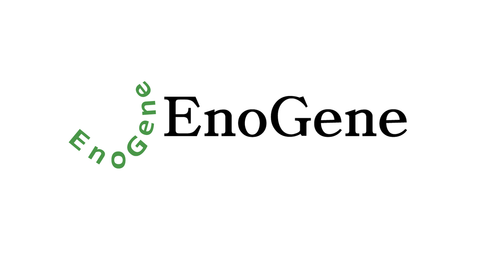Product Description
SIGIRR Antibody | 3367 | ProSci
Host: Rabbit
Reactivity: Human, Mouse
Homology: Predicted species reactivity based on immunogen sequence: Rat: (100%)
Immunogen: SIGIRR antibody was raised against a synthetic peptide corresponding to 15 amino acids at the C-terminus of human SIGIRR.
The immunogen is located within the last 50 amino acids of SIGIRR.
Research Area: Innate Immunity
Tested Application: E, WB, ICC
Application: SIGIRR antibody can be used for the detection of SIGIRR by Western blot at 1 μg/mL. Antibody can also be used for immunocytochemistry starting at 10 μg/mL.
Antibody validated: Western Blot in human samples and Immunocytochemistry in human samples. All other applications and species not yet tested.
Specificiy: N/A
Positive Control 1: Cat. No. 1219 – MCF7 Cell Lysate
Positive Control 2: Cat. No. 17-003 - A549 Cell Slide
Positive Control 3: N/A
Positive Control 4: N/A
Positive Control 5: N/A
Positive Control 6: N/A
Molecular Weight: Predicted: 45 kDa
Observed: 45 kDa
Validation: N/A
Isoform: N/A
Purification: SIGIRR Antibody is affinity chromatography purified via peptide column.
Clonality: Polyclonal
Clone: N/A
Isotype: IgG
Conjugate: Unconjugated
Physical State: Liquid
Buffer: SIGIRR Antibody is supplied in PBS containing 0.02% sodium azide.
Concentration: 1 mg/mL
Storage Condition: SIGIRR antibody can be stored at 4˚C for three months and -20˚C, stable for up to one year. As with all antibodies care should be taken to avoid repeated freeze thaw cycles. Antibodies should not be exposed to prolonged high temperatures.
Alternate Name: SIGIRR Antibody: TIR8, Single Ig IL-1-related receptor, Single Ig IL-1R-related molecule, TIR8
User Note: Optimal dilutions for each application to be determined by the researcher.
BACKGROUND: SIGIRR Antibody: SIGIRR is a member of the Toll-like receptor-interleukin 1 receptor superfamily. Members of this family are defined by the presence of an intracellular Toll-IL-1R (TIR) domain. The Toll-like receptors (TLRs) are signaling molecules that recognize different microbial products during infection and serve as an important link between the innate and adaptive immune responses. SIGIRR was originally identified through database analysis and was shown to have only one Ig domain as opposed to the normal three Ig folds seen in the TIR family. Similar to ST2, another TIR family member, it has been shown to negatively regulate IL-1 receptor and Toll-like receptor signaling. However, SIGIRR inhibits TLR-IL-1R signaling by dimerizing with TLR4, TLR5, TLR9, and IL-1R. It also associates with the down-stream TLR signaling proteins IRAK and TRAF6 in an IL-1-dependent fashion.
 Euro
Euro
 USD
USD
 British Pound
British Pound
 NULL
NULL
















